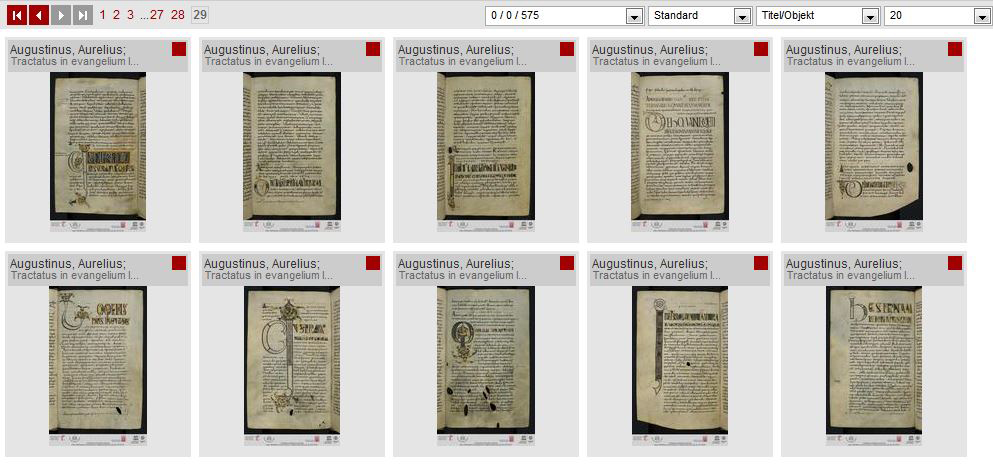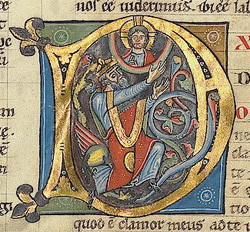Decoration: Cataloguing in heidICON
 For the complete cataloguing of the decoration in the manuscripts, which were written or held in Abbey Lorsch, a separate pool “Bibliotheca Laureshamensis” was set up in the image database heidICON. Due to copyright reasons not all manuscripts from the “Virtual Library” have been included.
For the complete cataloguing of the decoration in the manuscripts, which were written or held in Abbey Lorsch, a separate pool “Bibliotheca Laureshamensis” was set up in the image database heidICON. Due to copyright reasons not all manuscripts from the “Virtual Library” have been included.
The codicological information from the manuscript descriptions, which were compiled for the virtual reconstruction of the “Bibliotheca Laureshamensis”, is adopted in the datasets of the images.

Special attention was given to decorated text pages, decorated initials, illustrated pages and margin drawings. They are described according to art historical and in particular artistic aspects. For all decorated initials and text pages the beginning of a text is listed, artistic elements are described with established vocabulary from the field of manuscript illumination, and standardized keywords are used for certain types of initials and decorative elements. This enables a comparison of variations on the architectural frames of canon tables as well as the iconographic classification of different types of vines and interlacing, miniatures as well as drawings. Image motives can be searched both through the simple search option and the index of keywords. Thus, for example by selecting the keywords “Salvator” or “David” you will find, in the counter of the initial D, the kneeling David lifting his hands in prayer to God. Also the painting technique and the employed pigments – when identifiable – are documented in a searchable description text. In the example of the historicized initial with King David and the Salvator mundi, mentioned above, you will find the terms “Deckfarben” (Eng. “opaque colours”) and “Goldauflagen” (Eng. “gold plating”) in the description text.
All in all the image database provides the possibility to narrow the search down to manuscript shelfmarks, and with the help of the simple search function and the index of keywords you can search for iconographic subjects, authors, text groups, dates and places of origin as well as specific decorative forms. These new options with help to establish a basis for further comparison and research on the manuscript decorations styles of Lorsch which changed in the course of centuries.

![[de]](/images/all/flag_de.gif)
